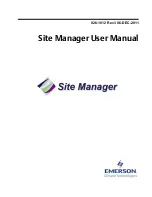
WiseScript Package Editor Reference
31
Installation Management
These files and registry keys are checked when the application starts, so limit the
number of items to prevent the start time from increasing.
2. Designate each of these files and registry entries for self-repair as follows:
File: Double-click the file on the Files page or double-click the Install File(s)
script line that references the file. On the Install File Settings dialog box, mark
Repair application if this file is missing.
Registry entry: Do either of the following:
Double-click the value in the lower-right list box on the Registry page and
mark Repair application if this registry value is missing on the dialog
box that appears.
In Script Editor, multiple registry values are contained in one Edit registry
keys script line. Double-click the Edit registry keys script line, navigate to
the required registry value and select it. Mark Repair application if this
registry value is missing.
3. Create a shortcut that runs the application, either on the Shortcuts page in
Installation Expert or with the Create Shortcut script action in Script Editor. On the
Shortcut Details dialog box, mark Check self-repair items when this shortcut is
opened.
See
Shortcuts
on page 72 or
Create Shortcut
on page 142.
When the application is installed, the list of required items is written to a special registry
key. When the end user clicks the shortcut that runs the application, the shortcut runs
unwise.exe (the uninstall program) with special command-line options. Unwise.exe
checks that the required items are present. If they are, unwise.exe opens the
application. The end user does not see this, and if the number of required items is few,
the extra time to start is negligible. If the required items are not present, unwise.exe
displays a message that the application is damaged, and asks whether to repair it, run it
anyway, or stop checking it at startup.
Language Support
¾
WiseScript Package Editor only
You can add language support to an installation, which provides the text in the
installation’s user interface elements in a different language. It does not translate your
application or any user interface elements that you customize in the installation.
You add language support on the Languages page. When an end user runs an
installation that supports multiple languages, the Select Language dialog box appears
first, and prompts the user to select a language. Subsequent installation messages and
dialog boxes appear in the selected language.
To add language support, you use the Languages page, the Installer Messages dialog
box, and custom dialog boxes.
See
Processes for Adding Language Support
on page 32.
What Languages Are Supported?
You can add support for as many as 15 different languages to a single installation.
WiseScript Package Editor contains the following pre-translated languages in addition to
English: French, German, Italian, Spanish. If the language you need is not one of the
Содержание WISESCRIPT PACKAGE EDITOR 8.0
Страница 1: ...WiseScript Package Editor Reference ...
















































